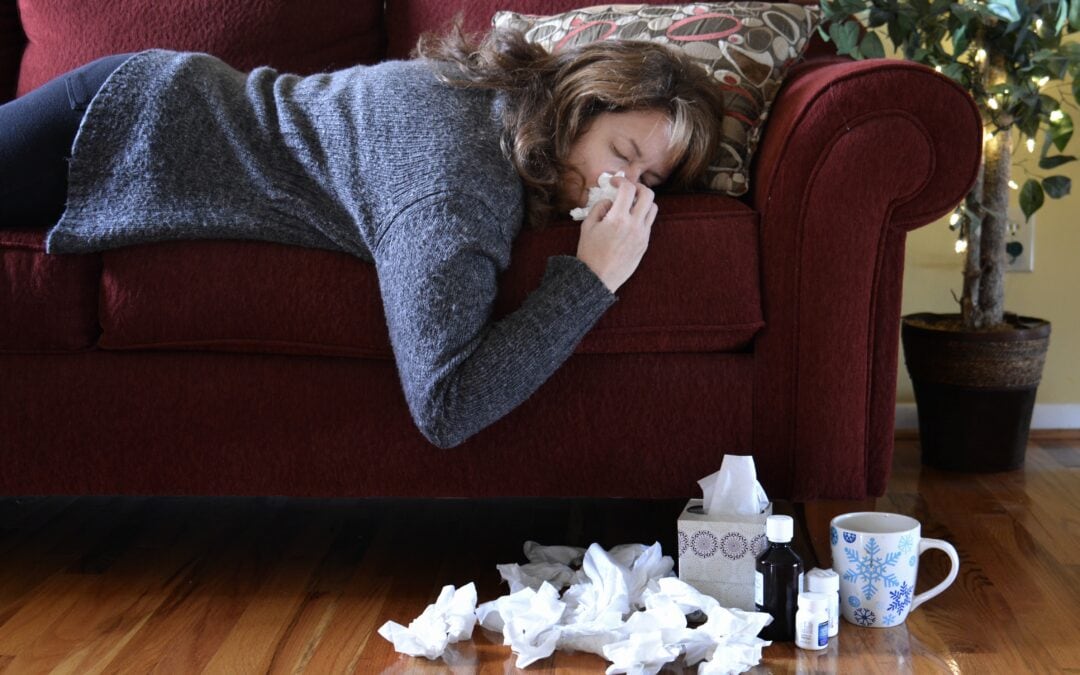A cold can be a nuisance, disrupting sleep patterns and making even the simplest tasks challenging. For those reliant on CPAP (Continuous Positive Airway Pressure) therapy for managing sleep apnea, dealing with a cold can present additional hurdles.
Understanding whether to continue your CPAP machine and how to optimize its effectiveness during a cold is crucial for maintaining both respiratory health and quality sleep. This article will discuss how to know whether or not to use your CPAP machine when you have a cold.
Should You Continue Using CPAP When You Have a Cold?
One common concern among CPAP users during a cold is whether they should continue their therapy. Typically, it is recommended to keep using your CPAP machine. Consistent use of CPAP is vital for managing sleep apnea, especially during illness when the body needs that extra respiratory support.
The steady airflow provided by the CPAP machine ensures you maintain unobstructed breathing and get good rest even while dealing with a cold. However, there are a few instances when taking a break from CPAP may be necessary.
- Severe Congestion — If your cold causes excessive congestion that interferes with mask fitting or makes breathing through the mask difficult, it might be wise to pause CPAP temporarily.
- Fever or Breathing Difficulties — When experiencing high fever or significant breathing troubles, you should consider talking to your healthcare professional. In these cases, they can advise on the best course of action with your CPAP use.
Tips for Using CPAP During a Cold
Keep Your Equipment Clean
Regularly cleaning your CPAP equipment is crucial to staving off the accumulation of potentially harmful bacteria and viruses, especially when dealing with a cold. Consistent and thorough cleanings can serve as a protective shield against infections and ensure the longevity of your CPAP machine. Always pay close attention to the manufacturer’s guidelines when cleaning.
Adjust Humidity Levels
Adjusting the humidity settings on your CPAP machine can be a game-changer when combating dryness caused by cold-related congestion. Upping the humidity levels creates a more moisture-rich environment, alleviating dryness in the airways and helping to break down mucus, meaning easier breathing.
This adjustment helps ease discomfort and promotes a better sleep experience while dealing with cold-related respiratory challenges. Experimenting with incremental adjustments in the humidity levels can help fine-tune the settings best to your needs.
Use a Mask Liner
Consider using a mask liner to create a barrier between your skin and the CPAP mask. This prevents skin irritation caused by continuous use, especially when tissues are more sensitive during a cold.
Positioning and Elevation
Elevating your head with an additional pillow is a simple yet effective way to alleviate congestion and give more comfort while using your CPAP machine with a cold. By positioning yourself at an incline, you can facilitate better drainage of nasal passages, reducing the sensation of congestion and making breathing more manageable.
This elevation helps prevent mucus buildup that might obstruct airflow. You can adjust your positioning as needed to see what works best and is the most comfortable to get the most out of your CPAP treatment.
Dealing with a Runny Nose
A runny nose can pose challenges when using a CPAP machine. Here are some steps to manage using a CPAP with a runny nose.
- Nasal Irrigation — Consider using a saline nasal spray or nasal irrigation before using your CPAP machine to clean nasal passages.
- Nasal Decongestants — Short-term use of over-the-counter nasal decongestants might help clear congestion, making your CPAP use more comfortable. You should always consult a healthcare professional before using any medication.
- Humidification — Optimal humidification settings on the CPAP machine can help prevent nasal dryness and irritation often caused by a runny nose.
When to Take a Break From CPAP
There are times when it is advisable to temporarily halt your CPAP usage.
- Excessive Discomfort — If the mask is causing excessive discomfort because of raw or irritated skin around the nose or face, taking a break can allow the skin to heal and prevent further irritation.
- Equipment Malfunction — In case of equipment malfunction or technical issues, discontinue use and seek repairs or replacement as soon as possible.
- Severe Congestion or Breathing Difficulties — In cases of severe congestion or notable breathing difficulties during an illness, it might be advisable to temporarily pause CPAP use. Talking to a healthcare professional is crucial to determining the best course of action in this circumstance.
Sleep Better With DreamZz Sleep Center
It’s important to remember each person’s experience with a cold and CPAP can vary. It’s essential to stay in touch with your healthcare providers for personalized guidance.
By staying proactive and making adjustments, CPAP users can effectively manage their sleep apnea, even when sick. For those undergoing sleep studies or using CPAP, maintaining a balance between consistent therapy and temporary adjustments while sick is essential for good sleep and overall health.
At DreamZz Sleep Center, we strive to get you back to a healthy, good night of sleep. For more personalized guidance on CPAP use during a cold or for any sleep-related concerns, consult with our experienced team. We start treatment as soon as possible, giving a consultation and sleep study within one or two weeks of your initial inquiry.
Contact us today to book an appointment.


Recent Comments